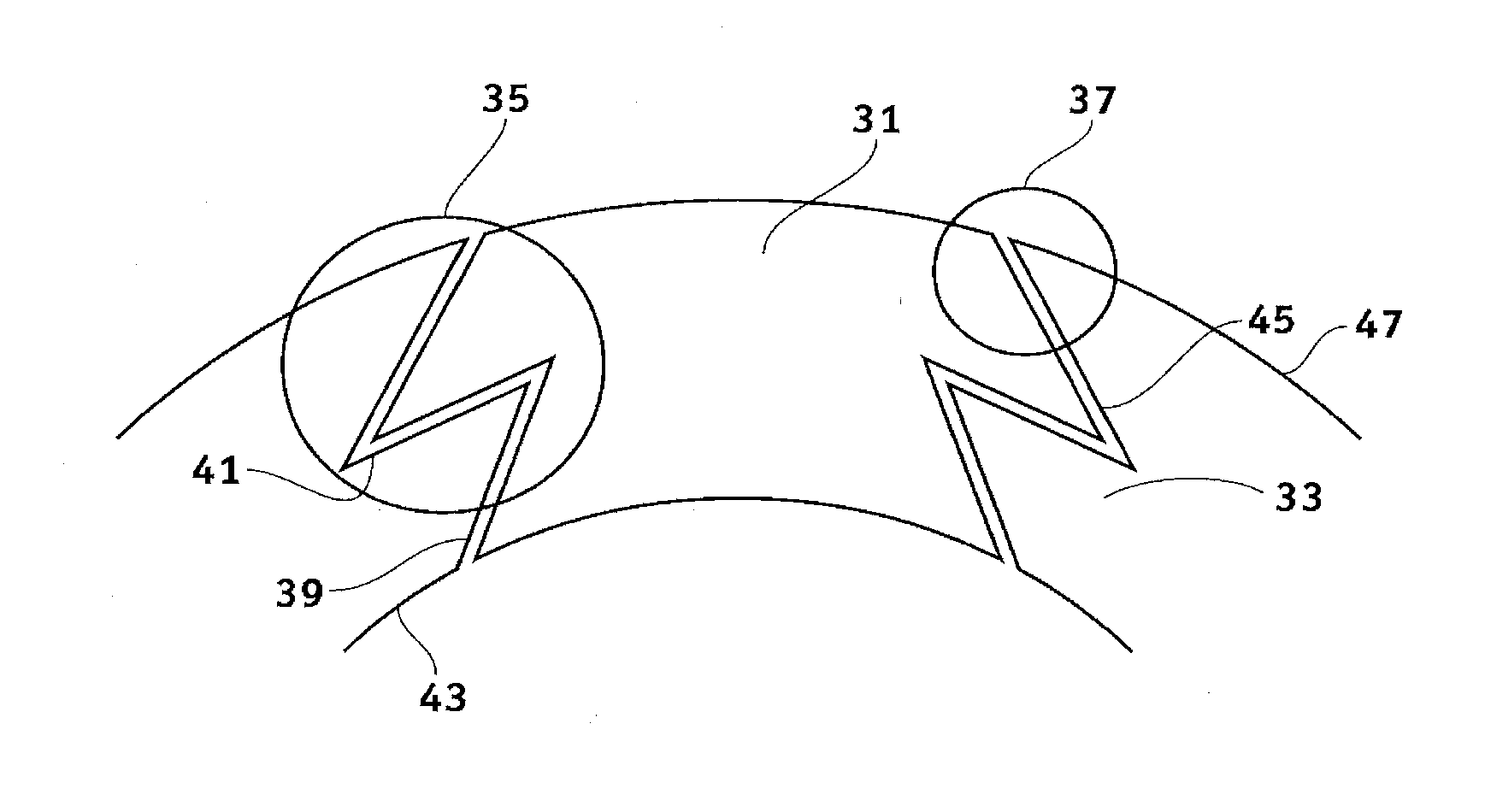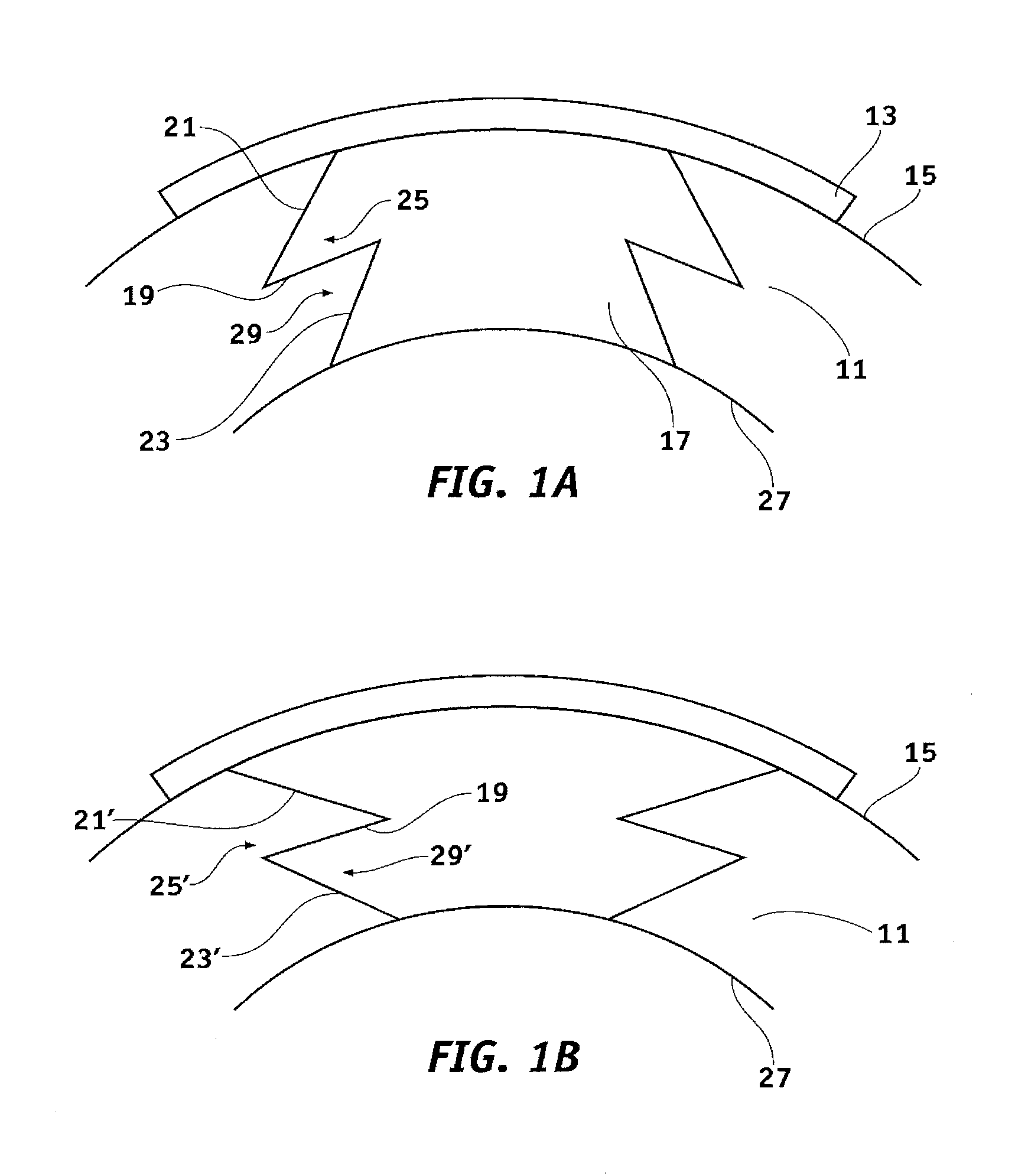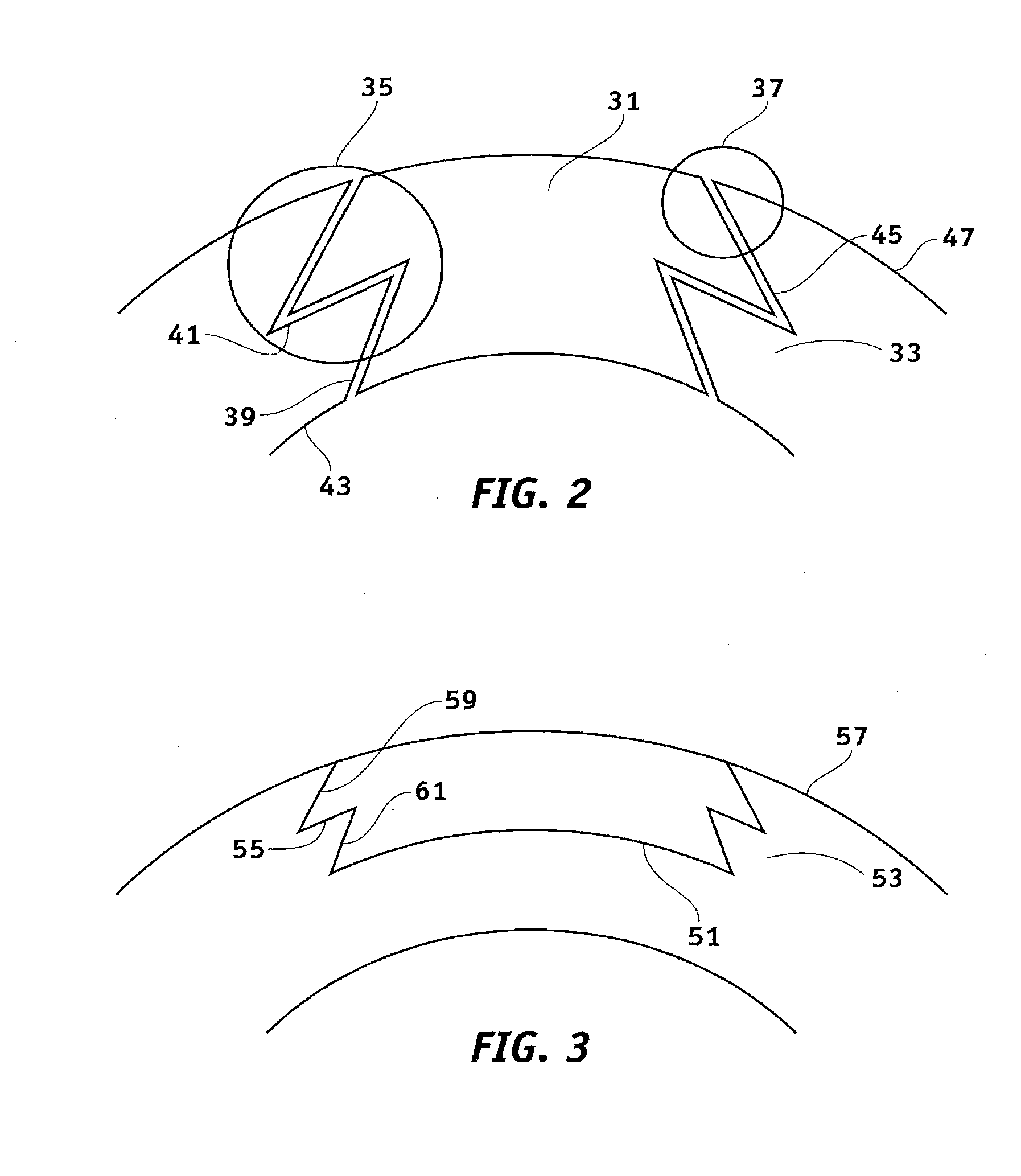System and method for resecting corneal tissue
a corneal tissue and system technology, applied in the field of systems and procedures for transplanting corneas, can solve problems such as theorems not rising to meet expectations
- Summary
- Abstract
- Description
- Claims
- Application Information
AI Technical Summary
Benefits of technology
Problems solved by technology
Method used
Image
Examples
Embodiment Construction
[0015]Turning in detail to the drawings, FIG. 1A illustrates the incisions made in a cornea 11 as part of a full thickness corneal transplant procedure. The same incisions are made in both the recipient cornea and the donor cornea, although the incisions in the donor cornea may be made approximately 1%-5% larger, or more preferably 2%-5% larger, than the incisions in the recipient cornea to account for shrinkage in the donor corneal tissue following resection. As part of the procedure, a contact lens 13 placed against the anterior corneal surface 15. This contact lens 13 deforms the cornea 11, forcing the anterior corneal surface 15 to take on the shape of the contact lens 13. Deformation of the cornea 11 in this manner provides multiple advantages which are well known to skilled artisans. For example, U.S. Pat. No. 5,549,632, which is incorporated herein by reference, describes advantages gained in making laser incisions by deforming the shape of the cornea, particularly by applana...
PUM
 Login to View More
Login to View More Abstract
Description
Claims
Application Information
 Login to View More
Login to View More - R&D
- Intellectual Property
- Life Sciences
- Materials
- Tech Scout
- Unparalleled Data Quality
- Higher Quality Content
- 60% Fewer Hallucinations
Browse by: Latest US Patents, China's latest patents, Technical Efficacy Thesaurus, Application Domain, Technology Topic, Popular Technical Reports.
© 2025 PatSnap. All rights reserved.Legal|Privacy policy|Modern Slavery Act Transparency Statement|Sitemap|About US| Contact US: help@patsnap.com



